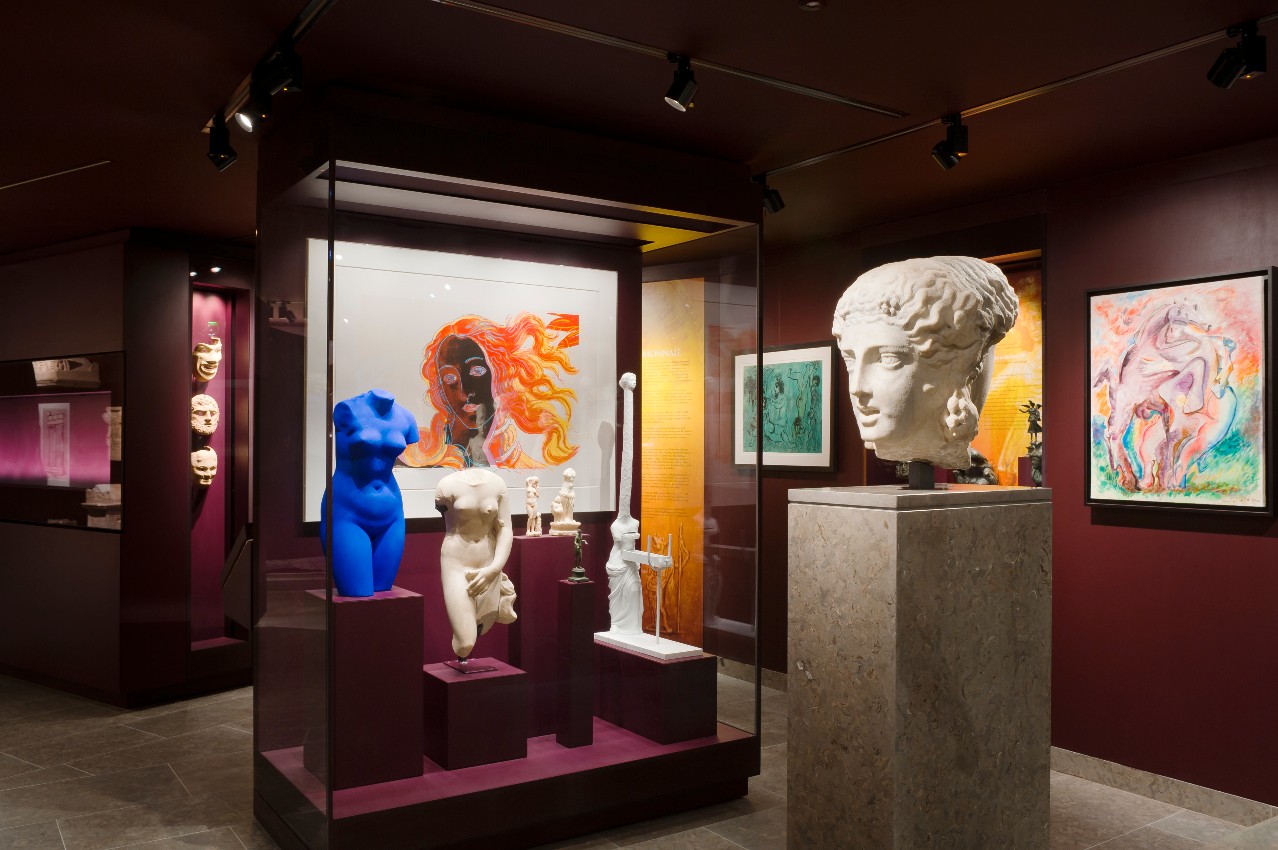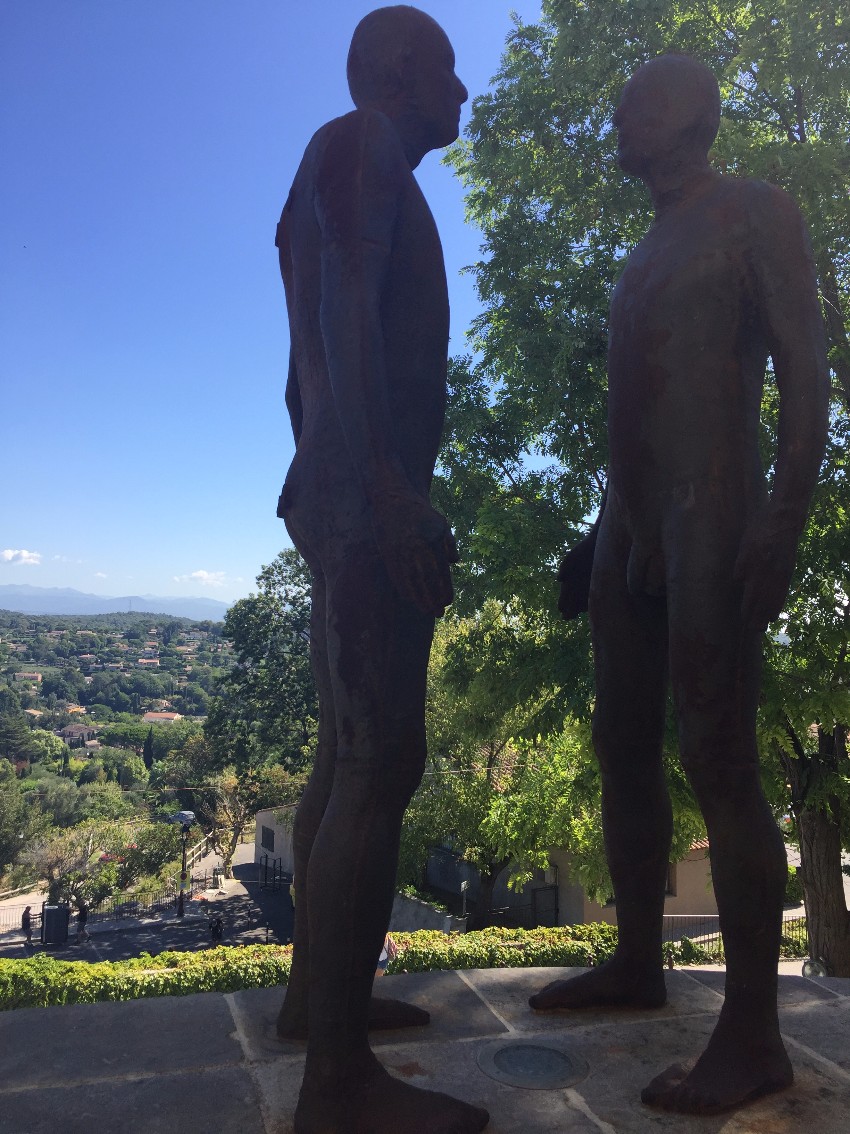
July 2017 saw a two-day research trip by the Modern Classicisms team to the Museum of Classical Art at Mougins: the world-class collection of ancient and modern art will be at the core of the Modern Classicisms exhibition at Bush House next year.
Christian Levett (owner of the Museum) and Leisa Paoli (Director) gave us a personal tour of the galleries. The museum opened a decade ago and houses a stunning collection of ancient statuary, vases, armour, coins and jewellery, displayed alongside paintings and sculptures from later centuries. The museum is housed in a mediaeval residence; it is filled with some 700 objects, in which ideas of the ‘classical’ are variously embodied or challenged.
Spanning four floors, the collections encompass Egyptian treasures (installed in a crypt-like subterranean space), Greco-Roman antiquities (including a hulking, scarred Antinous retrieved from the sea), an armory of ancient battle-wear, and modern and contemporary artworks which respond – in diverse ways – to the sculptural bodies, mythological themes and historical events of antiquity.
Mougins is a tranquil hilltop town on the heights of Cannes. It became a favoured haunt of leading twentieth-century artists including Pablo Picasso (who spent his final years there), Jean Cocteau, Fernand Léger, Francis Picabia, Man Ray, and Arman. These and many others are represented in the museum’s displays. Ancient and modern objects sit side-by-side in original, witty and often provocative juxtapositions. Amid the collection of bronze armour is a photograph by Man Ray of an antique ‘metal helmet’ – the ancient object visualized as a piece of Modernist sculpture. Among a group of ancient busts of civic and divine characters is a sugar-white marble sculpture by Marc Quinn depicting a blind subject. The sensual and surreal scenes of Picasso’s Vollard Suite etchings of the 1930s find echoes, meanwhile, in the ancient erotic amulets lining one of the staircases, including a monumental marble phallus.
One of the museum’s highlights is a cabinet of Venuses, in which different incarnations of the ancient goddess – Yves Klein’s Blue Venus, Warhol’s psychedelic version of Botticelli, a Roman torso, and Salvador Dalí’s elongated Vénus à la girafe – jostle for position. Outside on the balcony, overlooking the hills and forests (ablaze, in parts, from summer fires), two male figures square up in similar fashion: Antony Gormley’s symmetrical bronze Reflections are modern variants upon the ancient form of the kouros or male votive figure, which also evoke the myth of Narcissus, entranced by his own reflection.
The King’s team hugely look forward to bringing a selection of these treasures to Bush House in spring 2018.



